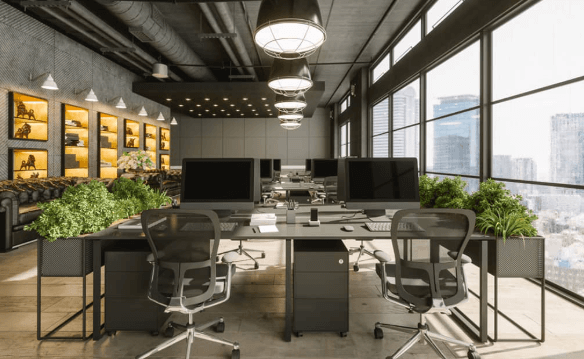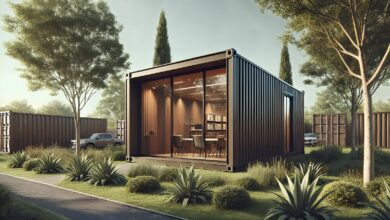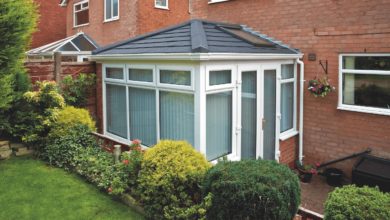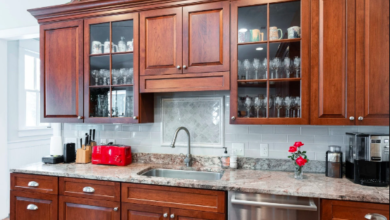The Rise of Sustainable Design in Commercial Renovations: Why It Matters Now More Than Ever

Sustainable design is no longer a luxury in commercial renovations—it’s a necessity. With climate change concerns, government regulations, and evolving consumer expectations, businesses are making eco-conscious choices in their renovation projects. From reducing carbon footprints to enhancing energy efficiency, sustainable renovations are transforming the commercial sector.
The Shift Towards Sustainability in Commercial Spaces
Sustainability is shaping the way businesses approach renovations. Companies are prioritizing materials, energy efficiency, and waste management practices that reduce environmental impact. This shift is driven by multiple factors, including cost savings, corporate responsibility, and the growing demand for green buildings.
See also: Why Professional Home Renovation Contractors Are Worth the Investment
Why Businesses Are Investing in Sustainable Commercial Renovations
There are several compelling reasons businesses are integrating sustainable design into their renovation projects:
- Cost Efficiency – Energy-efficient lighting, insulation, and smart systems lower operational costs over time.
- Regulatory Compliance – Governments are implementing stricter environmental regulations that require businesses to adopt greener practices.
- Enhanced Brand Reputation – Sustainability efforts improve a company’s image, attracting eco-conscious clients and employees.
- Improved Workplace Health – Better indoor air quality and natural lighting contribute to employee well-being and productivity.
For businesses in major urban centres like Toronto commercial renovations, incorporating sustainability is no longer an option—it’s an expectation. Companies in Canada’s largest cities are embracing green building standards to future-proof their spaces and appeal to a growing environmentally conscious clientele.
Key Elements of Sustainable Commercial Renovations
To achieve an environmentally friendly renovation, businesses must focus on the following critical components:
1. Energy-Efficient Lighting and HVAC Systems
Lighting and HVAC systems account for a significant portion of a commercial building’s energy consumption. Switching to LED lighting, installing motion sensors, and upgrading to energy-efficient HVAC systems can significantly reduce energy usage and costs.
2. Sustainable Building Materials
Choosing eco-friendly materials helps reduce environmental impact. Consider using:
- Recycled or reclaimed wood
- Low-VOC paints and finishes
- Bamboo flooring
- Recycled metal and glass These materials not only support sustainability but also add aesthetic value to commercial spaces.
3. Water Conservation Measures
Water efficiency is crucial in sustainable design. Businesses can install low-flow toilets, motion-sensor faucets, and water recycling systems to minimize waste. Green roofs and rainwater harvesting are also innovative solutions gaining traction.
4. Smart Building Technologies
Smart technologies enable businesses to monitor and optimize energy consumption. Automated lighting, climate control, and occupancy sensors adjust settings based on real-time usage, enhancing energy efficiency without sacrificing comfort.
5. Indoor Air Quality and Natural Ventilation
Poor air quality can negatively impact employee health and productivity. Using non-toxic building materials, installing high-quality air filtration systems, and integrating natural ventilation can significantly improve indoor air quality.
6. Waste Reduction and Recycling Initiatives
Renovation projects often generate substantial waste. Businesses should implement strategies to reduce, reuse, and recycle materials. Working with contractors who prioritize sustainable demolition and material recovery can make a significant difference.
7. Renewable Energy Integration
Installing solar panels or sourcing renewable energy from local providers can drastically cut carbon emissions. Businesses should explore power purchase agreements (PPAs) or government incentives for renewable energy adoption.
8. LEED and Green Building Certifications
Leadership in Energy and Environmental Design (LEED) certification sets the benchmark for sustainable commercial renovations. Many businesses pursue LEED certification to demonstrate their commitment to sustainability and enjoy benefits like tax incentives and increased property value.
Case Studies: Businesses Leading the Way in Sustainable Renovations
The Edge, Amsterdam
Known as the greenest office building in the world, The Edge features smart lighting, solar energy, and an innovative rainwater system, setting the standard for future commercial renovations.
The Bullitt Center, Seattle
This self-sustaining building uses solar power, rainwater collection, and composting toilets, proving that commercial spaces can be both high-performing and eco-friendly.
The Future of Sustainable Commercial Renovations
The demand for sustainable renovations will continue to grow as businesses recognize the long-term benefits. Future trends include:
- Biophilic Design: Integrating natural elements like green walls and indoor plants.
- Net-Zero Buildings: Structures that produce as much energy as they consume.
- Advanced Smart Systems: AI-driven energy optimization for efficiency and cost savings.
Conclusion
Sustainable design in commercial renovations is no longer a trend—it’s the future. Businesses that invest in green building practices benefit from cost savings, improved brand reputation, and compliance with evolving environmental standards. Whether upgrading an office, retail space, or industrial facility, integrating sustainability into renovations ensures a positive impact on both the environment and business success.
For businesses seeking Toronto commercial renovations, sustainability should be at the forefront of the decision-making process. Prioritizing eco-friendly materials, energy-efficient systems, and waste reduction strategies will not only contribute to a healthier planet but also enhance workplace productivity and long-term cost savings.
By embracing sustainability, businesses can stay ahead in an increasingly eco-conscious marketplace, ensuring that their commercial spaces are built to last while minimizing their environmental footprint.




